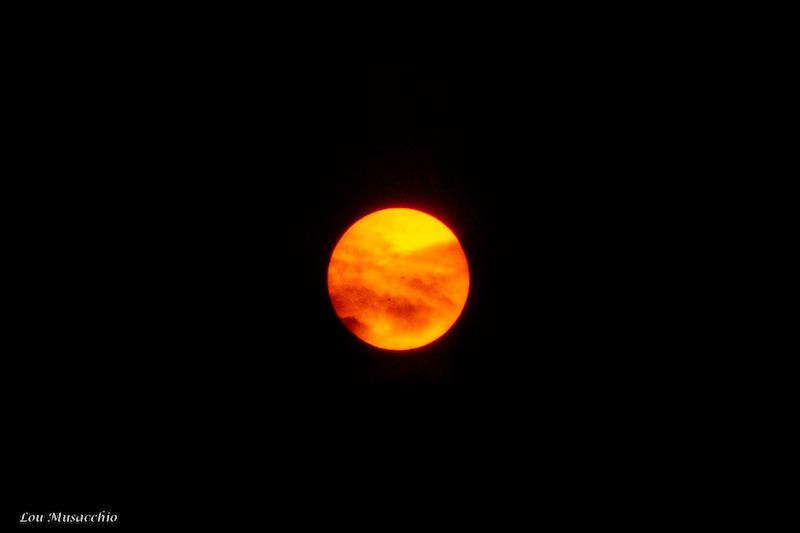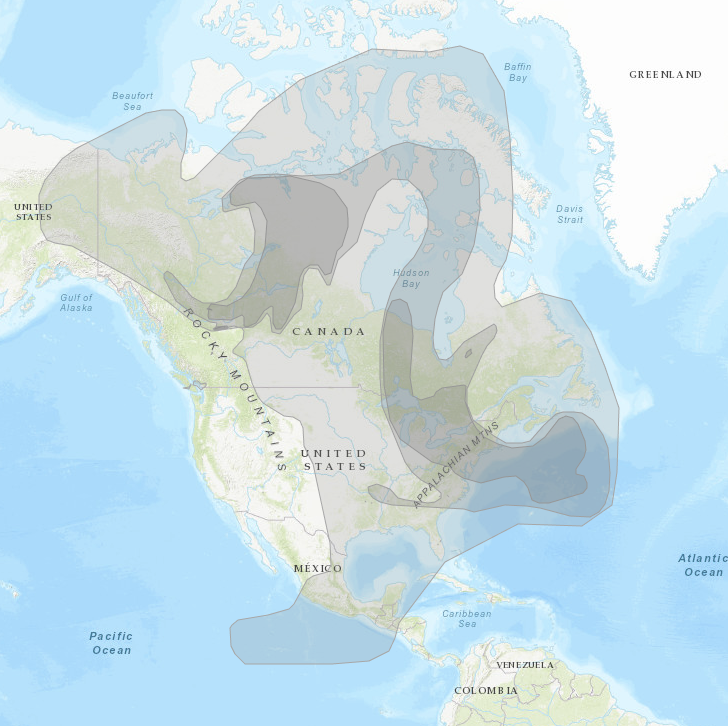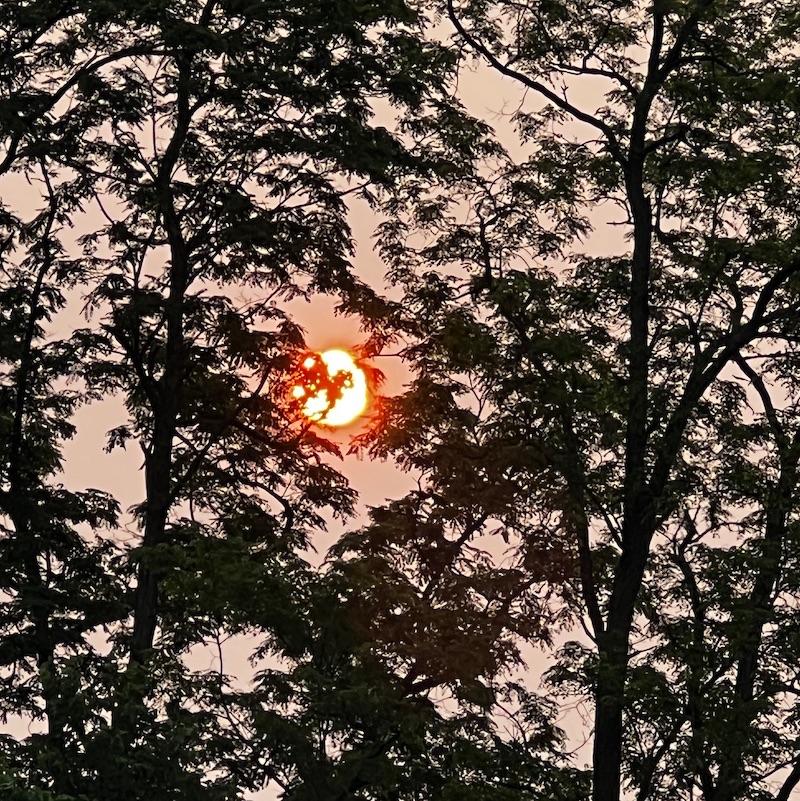
Read more: Canadian wildfire smoke turns US skies orange
Wildfires, and red suns and moons
Wildfires raging across Canada have sent smoke careening across North American skies. The northeastern portion of the United States has heavy smoke and an air quality alert has been issued. Some plane flights were even halted in that region. In other parts of North America, many people have noticed hazy skies and red suns and moons. But what makes the sun and moon turn red?
This week, @NOAA satellites are monitoring even more thick smoke from #wildfires burning in Canada that has been blowing over the eastern and central U.S., triggering air quality alerts in many areas.
Learn more in our latest #EarthFromOrbit video: https://t.co/zjwQ82xPFN pic.twitter.com/8goFTTx7x3
— NOAA Satellites (@NOAASatellites) June 8, 2023
Satellite view of the wildfire #smoke as it arrives in New York City ? ? pic.twitter.com/Xhw6H0oONA
— Zoom Earth ? (@zoom_earth) June 7, 2023

What causes the red suns and moons?
Les Cowley publishes the great website Atmospheric Optics and is surely the world’s best-known living master of the physics of sky phenomena. Here’s his explanation for red suns and moons during wildfire season:
The color of our skies is a matter of the sizes of the particles making up our air. It’s also a function of the number of particles per unit volume in air, and to a much lesser extent – during wildfire season – the color of soot itself.
Particles smaller than visible light wavelengths scatter short wavelengths (e.g. blue light) much more strongly than long wavelengths (red). This is known as Rayleigh scattering, named for Lord Rayleigh in the 19th century, who derived the small particle limit. Lord Rayleigh determined that the scattering goes as the inverse fourth power of the wavelength.
Hence, blue light is scattered some 10 to 15 times more than red light. Air molecules scattering in this manner are what generate our blue skies.
Note that the light of even glorious red sunsets still has some transmitted blue. Not all is scattered away!
Les Cowley continues:
As particles get bigger, they still scatter blue more than red, but the wavelength dependence weakens from the Rayleigh limit of the fourth power. Particles several times larger than light wavelengths scatter all wavelengths more or less equally.
Fresh smoke is an intermediate case. Look at a campfire sideways-on to the sunlight direction, and you’ll see its smoke is blue. If you are unfortunate enough to be downwind and in the smoke, the sun is reddened.
All this holds for single scattering where a sun ray is scattered by only one particle before reaching the eye. Where the smoke clouds are dense, there is significant multiple scattering. In the limit of an optically thick cloud, the light inside the cloud (or sky) becomes a uniform color: that of the incident light before significant multiple scattering. Thus, clouds are white inside, and a clear blue sky gets milky white toward the horizon. Multiple scattering modified the sky colors in San Francisco in the year 2020, for example, to an almost uniform orange-red because the sunlight reaching the dense smoke had already been reddened by less dense smoke.
Sky colors with multiple scattering get complicated and need mathematical modeling to make predictions.
Smoke from Canada’s 2023 wildfires
Many of Canada’s provinces are battling large wildfires in June 2023, and that smoke poured across the border in the United States. A gray sky with an oddly dampened and reddish sun was often the result.
A nearly full moon on our Towercam this evening. Notice how orange it is! That's due to wildfire smoke in the upper levels of the atmosphere, which is making both the moon & sun have a more red/orange hue to it. @FOX19 #Cincinnati #moon #smoke pic.twitter.com/2hC5FKrD37
— Ethan Emery FOX19 (@EthanEmeryWX) June 5, 2023


If you’ve captured photos of a strange colored moon, sun or sky due to smoke from wildfires, share it with EarthSky at EarthSky Community Photos!
More smoke conditions
Great smokey mountains of Pennsylvania! ? pic.twitter.com/pP9mOdyPWh
— Margaret (@Over_Capacity_0) June 7, 2023
Watch this time lapse. Our @weatherchannel team set this up yesterday afternoon. 2 hours condensed to 30 seconds. It’s amazing to see how the Canadian wildfire smoke changes the Manhattan skyline as seen from across the Hudson River in New Jersey. WATCH ? pic.twitter.com/hHJKLLI3r1
— Justin Michaels (@JMichaelsNews) June 8, 2023
Brooklyn Bridge NYC
2:30pm #CanadaFires pic.twitter.com/TTxdUGhQWI— Sandi Bachom ? (@sandibachom) June 8, 2023
New York's famous skyline, usually visible for miles, appeared to vanish as smoke from Canadian wildfires drifted south, blanketing cities in a thick, yellow haze https://t.co/pUEyZLhagS 1/6 pic.twitter.com/Br9cFTNYrh
— Reuters (@Reuters) June 8, 2023
Bottom line: Wildfire smoke is already drifting across North America in 2023, creating redder-than-usual sunsets. Here’s why wildfires cause red suns and moons.











